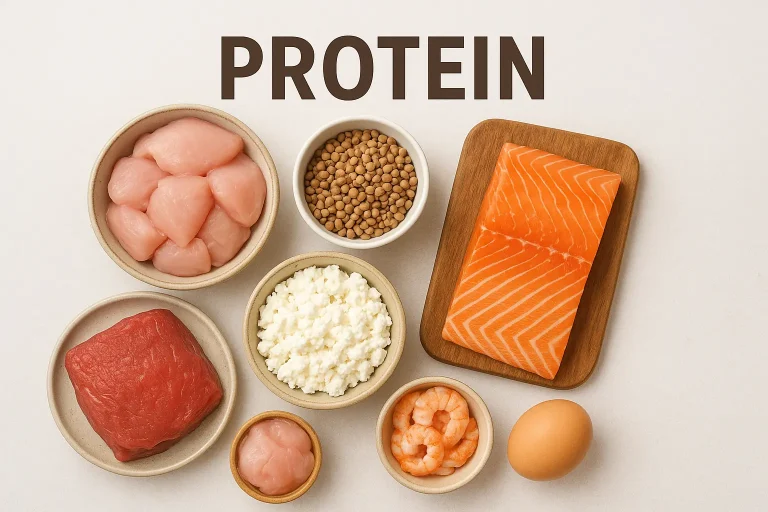In the age of calorie-counting apps and wearable fitness trackers, it’s easy to believe that managing your health is simply a numbers game. But what if the real issue isn’t how many calories you consume, but where those calories come from? Ultra-processed foods (UPFs) have quietly infiltrated our daily routines, often disguised as convenient, tasty, and even “healthy” options. Yet, beneath their glossy packaging lies a complex web of additives, industrial processes, and nutritional compromises that can have profound effects on our bodies and minds.
What Are Ultra-Processed Foods, Really?
Ultra-processed foods aren’t just your average packaged snacks. They’re industrial formulations made mostly or entirely from substances extracted from foods (like oils, fats, sugars, starches, and proteins) or synthesized in laboratories (such as flavor enhancers, colorings, emulsifiers, and preservatives). Think of things like sugary breakfast cereals, instant noodles, packaged pastries, and even some protein bars.
These products are designed for shelf stability, hyper-palatability, and mass production not for nourishing your body. They often contain little to no whole food ingredients and are engineered to be addictive, making it easy to overconsume without feeling satisfied.
Why the Label Tells a Bigger Story Than the Calorie Count
Calories are just one piece of the puzzle. Two 200-calorie snacks can have vastly different effects on your body depending on their composition. A handful of almonds provides fiber, healthy fats, and micronutrients. A 200-calorie pack of cheese-flavored crackers? Mostly refined carbs, artificial flavors, and sodium.
Here’s why the label matters more:Your Weekly Wellness Boost
- Nutrient Density: UPFs are typically low in essential nutrients like fiber, vitamins, and minerals. You may hit your calorie goals but still be nutrient-deficient.
- Additives and Chemicals: Many UPFs contain emulsifiers and preservatives that may disrupt gut health and contribute to inflammation.
- Glycemic Impact: Refined sugars and starches spike blood sugar levels, leading to energy crashes and increased hunger.
- Satiety and Overeating: UPFs are designed to be eaten quickly and mindlessly, often bypassing the body’s natural satiety signals.
Reading the label helps you understand what you’re really eating. Look beyond the calorie count and scan for ingredients you can’t pronounce, added sugars, and ultra-refined oils.
The Hidden Impact on Your Mind and Mood
Food isn’t just fuel it’s information for your brain. Emerging research suggests that diets high in ultra-processed foods are linked to increased risks of depression, anxiety, and cognitive decline. The gut-brain axis, a communication network between your digestive system and brain, is heavily influenced by what you eat. UPFs can disrupt this balance by harming gut bacteria and increasing systemic inflammation.
In contrast, whole foods—rich in fiber, antioxidants, and healthy fats support mental clarity, emotional stability, and long-term brain health. So while that packaged muffin may be convenient, it could be quietly sabotaging your mood and focus.
Routines, Rituals, and the Role of Real Food
We often build our routines around convenience: grab-and-go breakfasts, vending machine lunches, and microwave dinners. But rituals around food—like cooking from scratch, sharing meals, and savoring flavours can be deeply nourishing beyond the nutritional value.
Here’s how to shift your routines:
- Batch Cook Whole Meals: Prepare grains, proteins, and vegetables in advance to reduce reliance on packaged meals.
- Read Labels Religiously: Make it a habit to scan ingredients before buying. If it reads like a chemistry experiment, skip it.
- Snack Smarter: Replace UPFs with whole-food alternatives like fruit, nuts, or homemade energy bites.
- Mindful Eating: Slow down. Chew. Appreciate the textures and flavors. Your body will thank you.
Rituals built around real food foster connection—to yourself, your culture, and your community.
The Bigger Picture: Health, Sustainability, and Empowerment
Ultra-processed foods aren’t just a personal health issue they’re a public health and environmental concern. Their production often relies on monoculture farming, excessive packaging, and long supply chains. Choosing whole, minimally processed foods supports local agriculture, reduces waste, and promotes sustainability.
More importantly, it’s about empowerment. When you understand what’s in your food, you reclaim control over your health. You stop outsourcing your well-being to corporations and start making choices that align with your values.
Final Thoughts
Calories might be easy to count, but they don’t tell the whole story. Ultra-processed foods are engineered for profit, not health. By paying attention to labels, prioritising whole ingredients, and building rituals around real food, you can transform your relationship with eating from reactive to intentional, from passive to powerful.
Editorial Sources
Real Fit Wellness is committed to providing accurate, trustworthy content sourced from peer-reviewed research, board-certified medical experts, patient insights, and leading health organizations. Our editorial standards prioritize clarity, credibility, and relevance.
Sources
Monteiro, C. A., et al. (2019). Ultra-processed foods: what they are and how to identify them. Public Health Nutrition. https://www.cambridge.org/core/journals/public-health-nutrition/article/ultraprocessed-foods-what-they-are-and-how-to-identify-them/
Harvard T.H. Chan School of Public Health. (2021). The Nutrition Source: Processed Foods. https://www.hsph.harvard.edu/nutritionsource/processed-foods/
NOVA Food Classification. (2020).
https://www.fao.org/nutrition/education/food-dietary-guidelines/background/en/
The Guardian. (2023). Ultra-processed foods linked to increased risk of depression. https://www.theguardian.com/society/2023/sep/20/ultra-processed-foods-linked-to-increased-risk-of-depression






